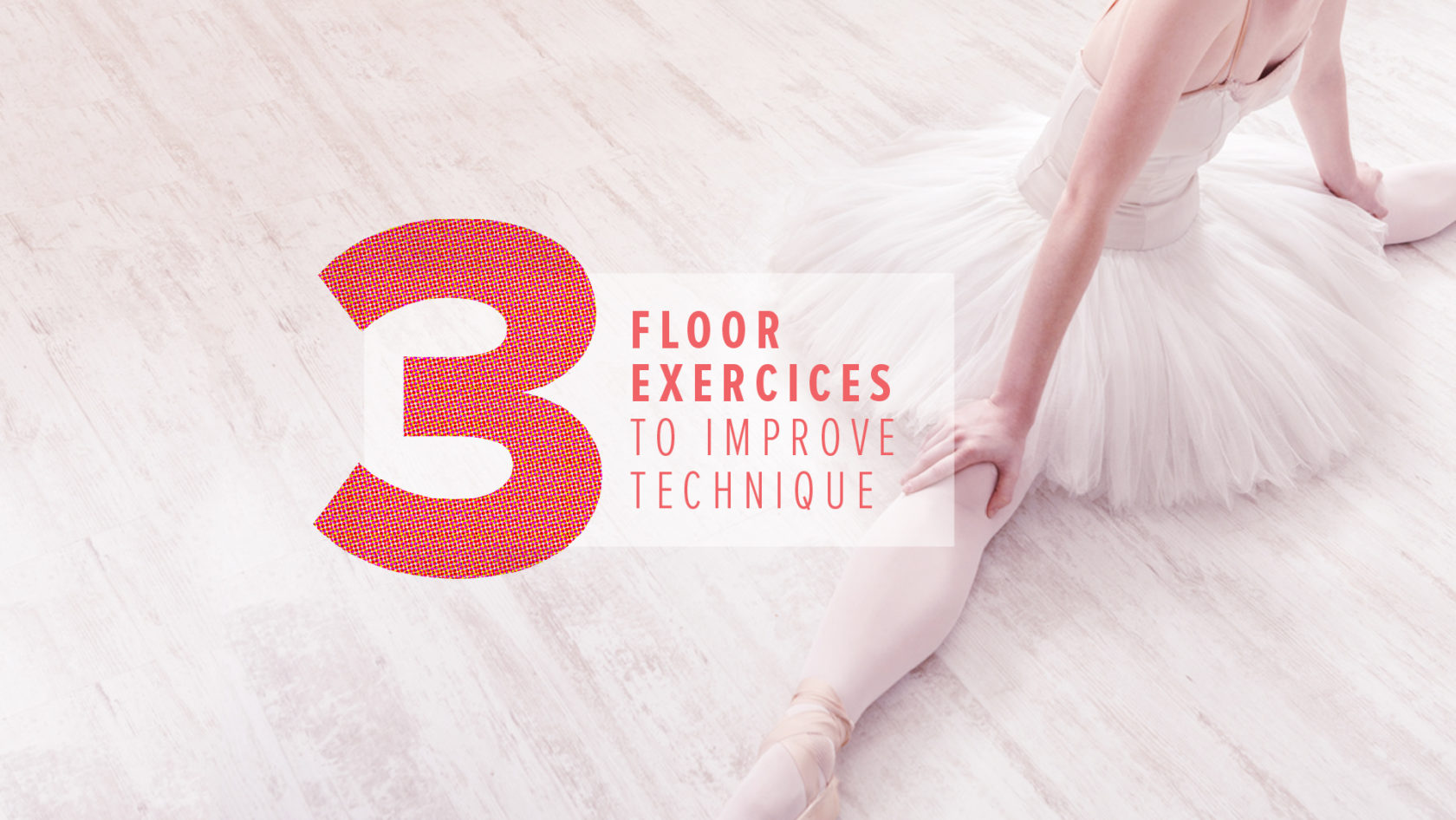A while back, I wrote about how beneficial floor work can be for students. From correcting alignment and repairing pirouettes, to cleaning battu and refining port de bras—taking your students’ training down to the floor holds so much potential for progress.
There are a wide range of exercises and methods geared specifically towards floor work, most of which produce amazing results when done properly with careful monitoring. For those teachers who have not yet stepped into this arena of instruction and are looking for a simple place to begin, I would like to offer three basic exercises that address common technical issues.
Exercise #1 Addressing Plié
I have found this especially helpful for the early intermediate levels when you are ready to take their technique to the next step. Often times dancers have difficulty understanding how to safely activate the external rotators and gently press the thighs back against the hips. A common mistake is for the thighs to shoot back but the hips go on the journey as well, resulting in a forward tilt of the hips. Basically, you are stuck with dancers whose backsides are hanging out and whose toes are gripping the floor for balance. This will not do.
TRY THIS: “Pressing Heels/Pulling Thighs”
- Dancer lies on their back on the floor in 1st Position; legs are stretched long, feet flexed.
- Pressing the heels together firmly, the legs are drawn up into a plié position. This should activate the external rotators. Insist the back remains long against the floor.
- As the dancer holds this position (remember: heels pressing together), ever so gently press the tops of the thighs slightly towards the floor. Repeat: PRESS GENTLY. There should NO PAIN involved. With the heels pressed together, the back long against the floor, and the thighs gently pulling back they should be able to feel correct placement.
- Recover from the plié by stretching the legs back to the starting position while maintaining the long back against the floor/heels pressing together/thighs pulling back.
Exercise #2 Addressing Port de Bras
We see it all the time. Arms that make us want to run away and cry. So much flailing going on! What we want is for our dancers to understand not just know how to shape the arms, but where the movement and the shape originates from to begin with. We need to get them connected to their back. This is very hard for students. However, until the connection is made, their port de bras will remain less than lovely.
TRY THIS: “Detaching Arms”
- Dancer lies on their back on the floor; legs and body are relaxed; arms are extended to their sides at shoulder height resting on the floor.
- They then imagine their arms are being pulled out from their shoulders; further still, they should feel the pull deep within the back close to the spine. It should feel as though their arms are attempting to detach from their bodies.
- If the detaching is happening correctly, their arms will lift slightly off the floor. Go ahead and have them shape their arms into 2nd Position.
- From there, while maintaining a constant “detaching” feeling, move through various port de bras.
Exercise #3 Addressing Demi Pointe
We teachers know the importance of demi pointe. From standing on demi pointe properly to moving through demi pointe consistently. We know so much of ballet hinges on this particular concept. Our students might understand the importance as well, but there is no way around the fact that this tiny movement requires enormous amounts of focus and time to master. I know I speak to my students a lot about using the feet on the floor, but sometimes it is helpful to remove the floor and practice the demi pointe movement in the air as this will help the muscles in the foot memorize what their job actually is separate from the floor.
TRY THIS: “Tendu in the Air”
- Dancer sits up tall (perhaps up against a wall), legs stretched out in 1st Position, feet flexed.
- While maintaining a tall body and turn out, they extend the leg into the air as though they are doing a tendu devant. The movement should be supported appropriately while the heel initiates the foot leading upward. The foot then pushes with great care through the demi pointe position to a fully pointed foot.
- Pulling the foot back through demi pointe and then the flexed position, the toes initiate the foot being pulled downward back to 1st Position.
NOTE: This movement, while simple enough, is a significant challenge as it not only requires full focus of the foot, but it also requires a strong core and quadriceps. On top of that, an additional challenge with this is the “supporting foot” should remain flexed and engaged while the “working foot/leg” extends/points.
These are but three exercises. There are so many more, and there are variations on nearly any exercise you find. Explore the floor and find ways to help your students grasp how to apply technique to their bodies. Often times simply doing a step on your back/side/stomach/etc as opposed to standing up is all that is needed for something to click. And when that clicking happens . . . well, nothing quite matches that feeling. For teacher or student.
Related Articles


Comments
No comments for this post.
Add Comment